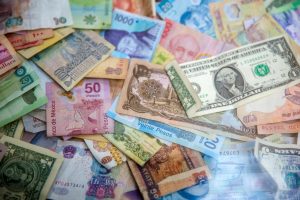How did Japan finance its 20th century wars? The answer has implications for the relationship between finance and international conflict, as well as lessons in how to escape the restrictions of international capital markets. As the United States increasingly flexes its financial muscles, understanding how nations have historically navigated financial solvency during periods of conflict will be critical.
In 1904-1905, Japan waged war against Russia on both land and sea, winning a series of victories that devastated Russian military power in Asia and left Russia’s imperial government teetering. Yet peace negotiations left Russia in a curiously strong position, with Japan making significant concessions in order to end the conflict. The reason for Japan’s apparent magnanimity was the perilous state of Japanese finances, which not only left Japan incapable of continuing the war, but risked default, followed by financial devastation. Japan had funded the war through heavy borrowing in London and New York, and for both financial and political reasons those sources of funding dried up before the peace conference.
Rather than rely on borrowing, Japan funded its participation in World War I through austerity and increased taxation. Japan’s (relatively) minimal participation in the war enabled it to get by on such means, which was fortunate given the tight credit situation created by heavy borrowing on the part of Italy, France, the United Kingdom, and Russia. A desire to avoid the real constraints imposed by international capital markets in 1905 undoubtedly played a role as well; the peace agreement caused a crisis for the Tokyo government, which needed to explain why battlefield sacrifices were apparently frittered away at the negotiating table.
By World War II, the Japanese model had changed again. Japan was completely cut off from international sources of finance, in large part because it had gone to war against the countries that dominated the financial markets. Instead of borrowing from abroad, the Japanese government borrowed from its citizens, essentially deferring the costs of the conflict until after the war. Japanese industry had advanced to the degree that it could provide the basic necessities for waging war, at least for a time. The second component of the Japanese finance plan involved extensive printing of currency for use in its Southeast Asian conquests. This allowed Japan to acquire resources through market means, with enforcement of monetary monopoly holding inflation in check. This worked well enough for a time, although the entire system was rendered moot by the destruction of the Japanese merchant marine. In any case, at the end of the war the Japanese government defaulted on all public debt, leaving the country in a state of immiseration.
What does this mean for the present and future? Any conflict between the United States and China would shake the global financial system to its very foundations. While both sides would undoubtedly anticipate a short conflict, if the contest stretched longer the ability of each to finance military expenditures from either foreign or domestic sources would become central to victory. In this case the United States retains crucial advantages because of the central position of the dollar and the enormous leverage this grants over international financial flows.

































